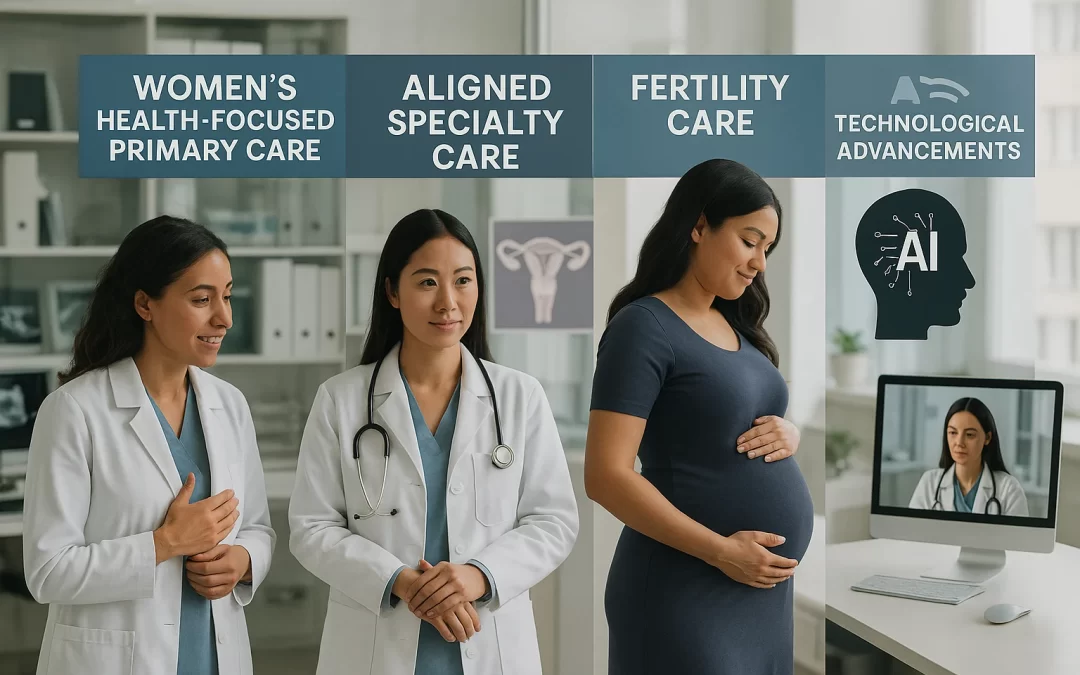As we navigate through 2025, the field of obstetrics and gynecology (OBGYN) is undergoing significant transformation. From technological advancements to evolving patient needs and workforce challenges, the trends shaping this specialty are critical for both physicians and practices. Below, we explore the major developments influencing OBGYN providers and recruitment strategies this year.

1. Increasing Demand Amid Workforce Shortages
The demand for OBGYN services continues to rise due to population growth, aging demographics, and increasing awareness of women’s health issues. However, this demand is juxtaposed with a shrinking pool of specialists. The American healthcare system is grappling with a nationwide physician shortage, and OBGYNs are among the most affected specialties. Rural areas are particularly hard-hit, with many regions struggling to attract and retain qualified professionals[1][2].
For practices, this shortage underscores the need for innovative strategies to attract talent. Offering competitive compensation packages, flexible work arrangements, and opportunities for professional growth can make a significant difference in securing top talent. Additionally, leveraging telemedicine can help bridge gaps in care delivery, especially in underserved areas.

2. Technological Innovations Transforming Care
Technology continues to revolutionize OBGYN practices in 2025. Key advancements include:
- AI and Robotics: Artificial intelligence is enhancing diagnostic accuracy and streamlining workflows, while robotic-assisted surgeries are becoming more common for procedures like hysterectomies and myomectomies. These technologies improve precision, reduce recovery times, and enhance patient outcomes[1][3].
- Advanced Imaging Techniques: Innovations such as 3D ultrasounds and time-lapse imaging are providing more detailed insights into fetal development and gynecological conditions[4].
- Telemedicine Integration: Virtual consultations have become a staple in women’s health, enabling patients to access care conveniently while reducing the burden on OBGYNs[4].
Physicians who embrace these technologies not only improve patient care but also position themselves as leaders in a competitive field.

3. Rising Salaries Amid Competitive Recruitment
OBGYN salaries are on an upward trajectory in 2025 due to high demand and limited supply of specialists. The average annual salary now ranges between $380,000 and $420,000, with experienced professionals earning upwards of $450,000[5]. This increase reflects the critical role OBGYNs play in addressing complex healthcare needs.
For OBGYN practices, understanding regional salary benchmarks is essential to crafting attractive offers. Emphasizing additional benefits such as loan repayment programs, relocation assistance, and continuing education opportunities can further enhance recruitment efforts.

4. Evolving Models of Care Delivery
The traditional OBGYN practice model is giving way to more diverse approaches tailored to women’s unique needs:
- Women’s Health–Focused Primary Care: Many healthcare systems are expanding primary care offerings specifically for women. These models integrate general health services with gynecological care, providing a holistic approach[6].
- Specialty Centers of Excellence: Practices focusing on niche areas like menopause management or fertility care are gaining traction. These centers offer specialized services that cater to specific patient populations while driving higher patient satisfaction[6][4].
- Concierge Medicine: Subscription-based models are becoming popular among women seeking personalized attention and comprehensive care plans[6].
These evolving models present opportunities for physicians looking to specialize or diversify their practice.

5. Fertility Care: A Booming Subspecialty
Fertility care remains one of the fastest-growing areas within OBGYN. Advances in assisted reproductive technologies (ART), such as improved IVF protocols and genetic profiling, are driving better outcomes for patients[4]. Additionally, telemedicine is making fertility consultations more accessible.
States mandating insurance coverage for fertility treatments and large employers offering these benefits are further fueling demand. Practices specializing in fertility care must focus on differentiating themselves through superior outcomes and exceptional patient experiences[6][4].

6. Financial Pressures on Practices
Despite rising demand for services, many OBGYN practices face financial challenges due to increasing staffing costs and declining reimbursement rates. Labor shortages have driven up salaries for support staff like nurses and medical assistants, squeezing profit margins[1]. Additionally, administrative burdens tied to insurance collections continue to impact cash flow.
To address these challenges, practices are adopting cost-saving measures such as outsourcing administrative tasks or investing in revenue cycle management solutions.

9. Recruitment Strategies for Success
Given the competitive market for OBGYNs in 2025, practices must adopt targeted strategies:
- Leverage Data Analytics: Use data to identify regions with high demand and tailor recruitment efforts accordingly.
- Promote Work-Life Balance: Highlight flexible scheduling options that appeal to younger physicians prioritizing work-life balance.
- Utilize Physician Sourcing Firms: Experienced physician sourcing specialists can help reach a broader audience of potential candidates at a lower cost than traditional recruitment firms.
By aligning recruitment efforts with current trends, organizations can attract top-tier talent even in a challenging market.

Conclusion
The landscape of obstetrics and gynecology is evolving rapidly in 2025. From technological innovations to shifting care models and workforce challenges, these trends present both opportunities and obstacles for physicians and practices alike. By staying informed about these developments and adapting accordingly, stakeholders can ensure they remain at the forefront of women’s healthcare.
RM Medical Search has partnered with dozens of OBGYN practices over the last two decades to help find and place top tier physicians. If you have a current or upcoming need for OBGYN candidates, please contact us today.

